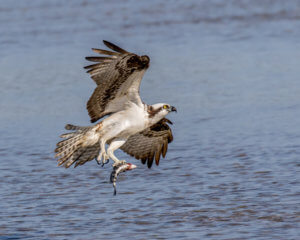
Nature notes: discovering winter’s treasures
Look for these creatures and early wildflowers during our wettest months
China Camp explodes with life once winter rains arrive. New shoots pop up seemingly overnight, brightening the ground with a veil of green. Creatures appear, looking for mates in the wet and mossy forest and in our wetlands. Here’s a look at some of the natural treasures you can experience on a wintertime visit to the park.
Amphibians arise: stop, look, and listen

Walk Shoreline Trail this time of year and you’ll likely get quite an earful of Sierran chorus frogs (Pseudacris sierra). When winter rains arrive at China Camp, these small, well-camouflaged frogs (usually a mottled mix of greens and browns) leave the forest and head to our marshy meadows to breed and lay eggs.
Though their coloring and size make individuals hard to spot, chorus frogs en masse can’t be missed—at least by ear. Hike the Back Ranch Meadows Campground access road or the road to Miwok Meadows and stand still for a moment. (The frogs go silent when they sense movement.) You’ll soon enjoy the nearly deafening chorus of countless little frogs, all vying to charm a mate.
Other amphibians can be easier to spot—if you look down. California newts (Taricha torosa), pictured at the top of this page, also called orange-bellied newts, start marching through China Camp’s forests once rains come, heading for seasonal creeks and ponds to lay their eggs. So do rough-skinned newts (Taricha granulosa), which closely resemble California newts. (Both have rusty gray or orange-brown bodies with rumpled skin and bright orange bellies.) Look but don’t touch these bug-eyed little cuties: their skin contains a potent neurotoxin. And if you’re riding a mountain bike, please slow down so you don’t inadvertently injure or kill a newt or other creepy crawlie.
First wildflowers begin to pop

Say wildflowers and you probably think springtime. But here at China Camp, first blooms start “springing” (sorry, we couldn’t resist) as soon as winter rains drench the soil. Some of the first blooms you’re likely to see are dainty milkmaids (Cardamine californica). Look for multiple four-petaled blooms ranging from creamy white to blush pink, dancing on thin stems about a foot above the ground, usually in the shadowy woods or edges of meadows throughout the park.

Another early bloomer has a mouthful of a name: fetid adder’s tongue (Scoliopus bigelovii). The rather bizarre name refers to two features of this intriguing early-blooming lily. First, the tiny flowers, which sport a trio of creamy-white petals scribed with burgundy pinstripes, are said to give off the faint scent of rotten (or fetid) meat, which aims to attract pollinating gnats.
As for the second feature, the “adder’s tongue” part of the name, it refers to the large leathery leaves (glossy green with tan splotches), which poke out of the ground just after the flowers. Since the flowers can be tough to spot, look for the green tips of the leaves poking out of the soil, then search for the flowers. Target the well-shaded banks rising above the wettest, shadiest parts of Shoreline and Bay View Trails—it helps to get low to the ground and scan for the flowers. Once you see one little bloom, you’ll get the hang of it, and likely spot more.

Manzanita also blooms early here. Both varieties that grow at China Camp—Parry manzanita (Arctostaphylos manzanita ssp. manzanita) and Eastwood manzanita (Arctostaphylos glandulosa ssp. glandulosa) have clusters of bell-shape blooms.
Manzanita’s white to pale pink flowers have a sweet scent with hints of warm honey, and are favorites of our resident Anna’s hummingbirds, who will stake out and loudly defend a favorite bush or stand of flowering manzanita. After a windy storm, the tiny bells often sprinkle the ground like floral confetti.
Nesting time for birds of prey
While most of China Camp’s birds start nesting in spring, some of our most impressive species nest earlier. Birds of prey at the park, including red-tailed and red-shouldered hawks, Cooper’s hawks, and assorted owl species, typically nest as early as February. The early-bird timing helps give young hawks and owlets plenty of time to develop their hunting skills before they flap away on their own.

While hawk and owl nests may be tucked away in parts of the park where you won’t likely see them, there is one species that’s built a very visible nest near the park. A pair of ospreys (Pandion haliaetus) typically return to their nest that crowns one of the tall electrical towers just outside the park’s northwestern boundary, along N. San Pedro Road. Bring binoculars to check out the large tower-topping nest (used year after year), but do not disturb adult ospreys or their young, which typically stay in the nest until August.—by FOCC volunteer Harriot Manley

